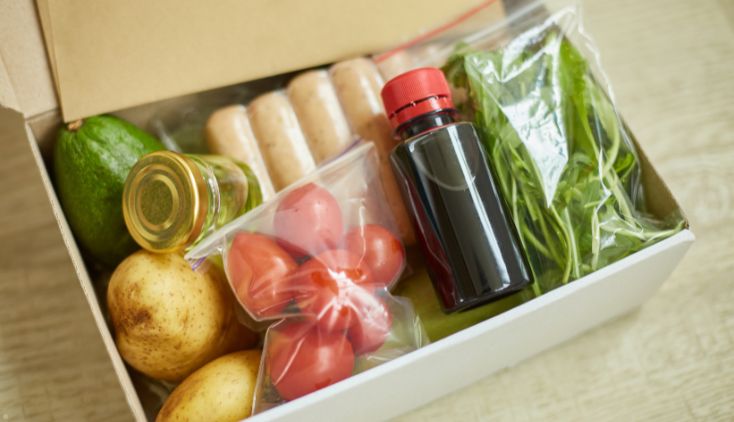Find the Perfect Fit for Your Needs
Meal kit delivery services have exploded in popularity across the United States, promising fresh ingredients, chef-designed recipes and the convenience of skipping long grocery store lines. Whether you’re looking to eat healthier, save time or explore new cuisines, meal kits can make home cooking easier and more enjoyable. But with so many options—and a few bad actors in the mix—it’s important to know what to watch out for before subscribing. Here are the biggest mistakes to avoid when choosing a meal kit plan for your lifestyle, plus a few red flags and scams to steer clear of.
1. Ignoring Your Actual Cooking Habits
Many people sign up for a meal kit because they love the idea of home-cooked meals, but not everyone loves the process. If you’re someone who’s short on time or energy after work, an intricate recipe with multiple steps can feel like a burden rather than a treat.
Before committing, look honestly at your cooking habits. Do you like to cook but hate planning meals? Do you have 30 minutes or less to prepare dinner most nights? Choose a service that matches your reality. Some, like EveryPlate or Dinnerly, emphasize simplicity and affordability, while others, such as Blue Apron or HelloFresh, offer more complex dishes for adventurous home cooks.
2. Not Reading the Fine Print on Subscriptions
One of the biggest frustrations with meal kit services is the subscription model. Most require you to sign up for recurring weekly deliveries rather than letting you order one box at a time. Many first-time customers fail to realize that their “trial box” automatically renews, leading to surprise charges.
Before entering your payment information, review the cancellation policy and billing terms carefully. Make sure you understand:
- How to skip a week (some apps make this easy, others don’t).
- When you’re charged (often several days before delivery).
- How to cancel (some require email confirmation or phone calls). Keep screenshots or email confirmations of cancellations to avoid disputes later.
3. Falling for “Too Good to Be True” Deals
Meal kit promotions are everywhere: “Get your first box free!” or “75% off your first three boxes!” These deals can be great, but scammers have taken advantage of their popularity. Some fake websites mimic legitimate brands, collecting credit card details or personal information.
To avoid scams:
- Always verify the web address. Official meal kit sites usually end in “.com” and use secure payment portals (“https”).
- Be wary of social media ads that seem off-brand or redirect to unfamiliar pages.
- Check online reviews or the Better Business Bureau (BBB) for reports of fraudulent companies.
Even legitimate services can use tricky marketing tactics. Many promotions require signing up for an ongoing plan that renews at full price after the discount period ends. Mark your calendar for when the deal expires so you’re not caught off guard.
4. Overlooking Hidden Costs
Meal kits can feel like a money-saver at first, but not all pricing is transparent. The base price may look low, but some services tack on shipping fees, add-on costs for premium meals or higher prices for two-person versus four-person boxes.
Make sure to factor in:
- Shipping fees. These can range from $5 to $10 per box.
- Premium meal upgrades. Steak, seafood or specialty ingredients often cost extra.
- Wastage. If you skip a week or forget to pause, food (and money) can go to waste.
Compare the cost per serving to your usual grocery spending—sometimes, the convenience outweighs the higher price, but only if you’re using the service consistently.
5. Ignoring Dietary and Allergen Information
If you have specific dietary needs—vegetarian, gluten-free, low-carb or dairy-free—it’s crucial to check ingredient labels and menu filters. Some services advertise flexible menus but may not fully accommodate allergies or sensitivities.
Look for meal kits that clearly list potential allergens and provide detailed nutritional info. Services like Green Chef and Purple Carrot cater to specific diets, while others offer customization options. Don’t assume all “healthy” meal kits meet your personal requirements.
6. Not Checking Delivery Options or Freshness Guarantees
Another mistake is assuming every service delivers everywhere or that ingredients always arrive fresh. Meal kits are shipped in insulated boxes, but delays or warm weather can compromise quality.
Before signing up, verify:
- Delivery days and time windows in your area.
- Refund or replacement policies for spoiled ingredients.
- Packaging sustainability if you’re concerned about waste. Some companies now offer recyclable or compostable materials.
7. Forgetting to Evaluate Portion Sizes
Portion sizes can vary greatly among meal kits. Some customers find that “two servings” barely feeds two adults, while others end up with leftovers. Read reviews or check social media for real customer photos before subscribing. This helps you avoid waste, or the frustration of still being hungry after dinner.
The Positives of Meal Kit Plans
Despite potential pitfalls, meal kits offer many benefits when chosen wisely:
- Convenience. No meal planning or grocery shopping needed.
- Portion control. Helps reduce food waste and overeating.
- Skill building. Great for learning new cooking techniques or cuisines.
- Dietary variety. Encourages trying new ingredients and balanced meals.
- Flexibility. Most allow skipping weeks or adjusting servings.
- Freshness. Many kits use high-quality, pre-portioned ingredients.
These options can be a smart, enjoyable way to simplify dinner if you know what mistakes to avoid when choosing a meal kit. Take time to research, compare and understand your subscription terms. With the right choice, you’ll enjoy delicious, stress-free meals delivered straight to your door, without any unwelcome surprises.
